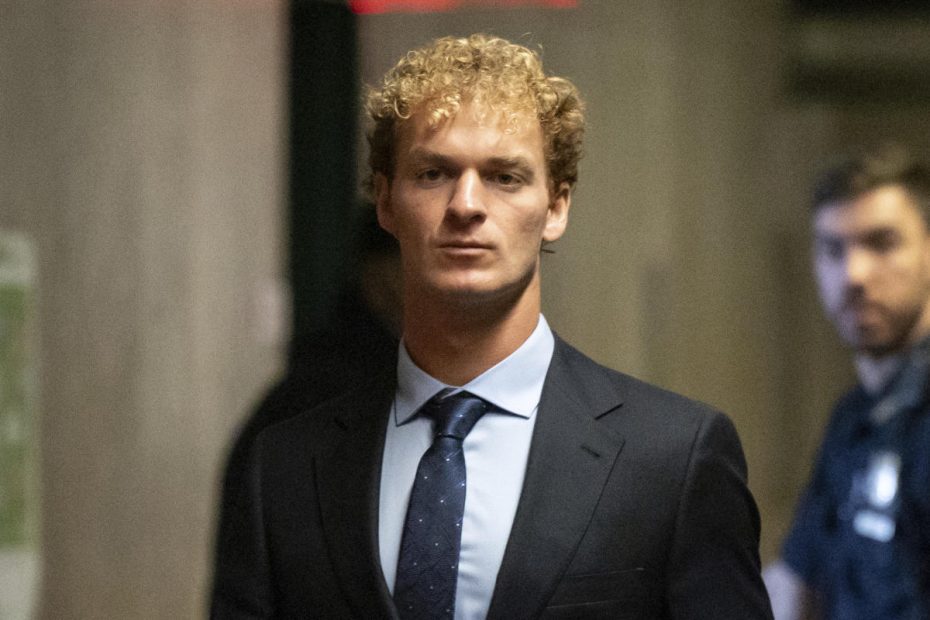NEW YORK (AP) — When Daniel Penny put his arm around a homeless man's neck on a Manhattan subway last year, it appeared the 25-year-old veteran was deploying a nonlethal chokehold long drilled on U.S. Marines .
If done properly, the maneuver should knock out a person without killing him or her, according to Joseph Caballer, a combat instructor in the Marine Corps who has trained Penny in several types of holds. But if the technique is left on for too long, it can restrict blood flow to a person's brain, ending his or her life within minutes.
“Once the person becomes unconscious, you have to let go,” Caballer told a jury Thursday.
Caballer's testimony came weeks after the trial of Penny, who is charged with manslaughter and negligent homicide after placing Jordan Neely, a homeless man and Michael Jackson impersonator, in a fatal chokehold last May.
Prosecutors allege Penny “went way too far” in his attempt to control Neely, showing “indifference” toward his life even after he lost consciousness.
Penny, an architecture student who served four years in the U.S. Marines, told police he wanted to protect himself and other passengers from a man who was behaving erratically on the train and frightening passengers with disturbing comments. His attorneys have highlighted Neely's previous arrests, along with his struggles with mental illness and drug use.
Bystander video of the encounter shows Penny with his biceps pressed over Neely's neck and his other arm on top of his head, a position he held for nearly six minutes even after the man went limp.
The technique — an apparent “blood choking” — can make a person feel like they are “trying to breathe through a broken straw,” Caballer said. Caballer recalled telling his fellow Marines during his own training sessions, “You don't want to hang in there. This could lead to actual injury or death.”
When asked by prosecutors whether Penny used the chokehold in an “inappropriate” manner, Caballer said he had.
Attorneys for Penny claim their client tried to restrain Neely by placing him in a headlock, but did not use force during the interaction. They have cast doubt on the city medical examiner's finding that Neely died from the chokehold, citing his health problems and drug use as possible factors.
Pressed by Penny's attorney, Caballer acknowledged that he “couldn't definitively see from the video how much pressure is actually being applied.” But at times, he said, it appeared that Penny used a hold that may have cut off blood flow to Neely's brain.
“He could possibly cut off one of the carotid arteries,” the witness added.
On Thursday, jurors were also shown for the first time a video of Penny demonstrating the chokehold to detectives during an interview at the police station.
“He had his back to me and I held him down, put him on the ground, and he's still writhing around and going crazy,” Penny said, adding: “He has an outburst at one point energy and so did I. I have to keep him a little more stable.”
Caballer is one of the last witnesses prosecutors are expected to call in a trial that has divided New Yorkers and put a national spotlight on the city's response to crime and disorder on public transportation.
In the 18 months after the murder, Penny was embraced by conservatives as a Good Samaritan who used his military training to protect his fellow riders. U.S. Rep. Matt Gaetz, who was nominated by President-elect Donald Trump this week as his attorney general, described Penny as a “Subway Superman.”
But his trial has also sparked daily protests from Black Lives Matter activists, who have labeled Penny a racist vigilante who overreacted to a Black man in the midst of mental health treatment.
Penny faces up to 15 years in prison if convicted.

